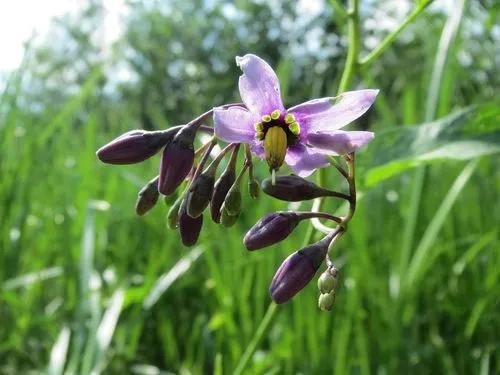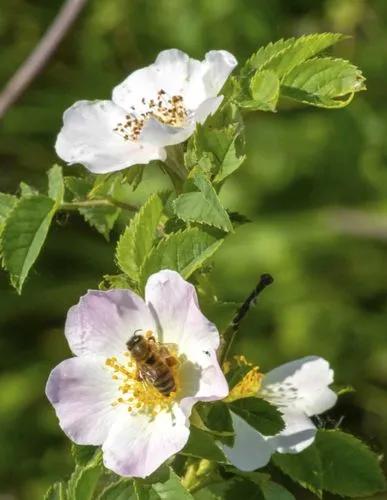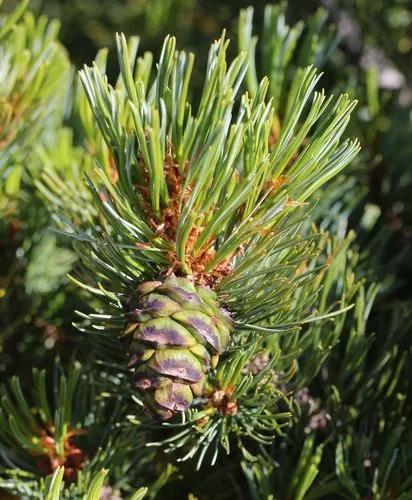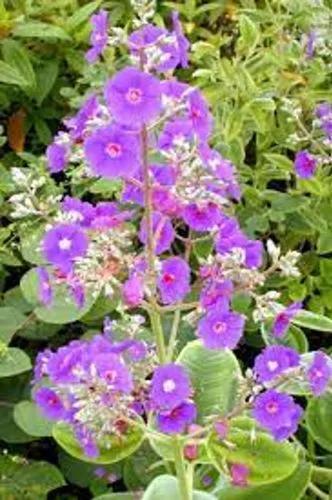Eucalypts vary in size and habit from shrubs to tall trees. Trees usually have a single main stem or trunk but many eucalypts are mallees that are multistemmed from ground level and rarely taller than 10 metres (33 feet). There is no clear distinction between a mallee and a shrub but in eucalypts, a shrub is a mature plant less than 1 m (3 ft 3 in) tall and growing in an extreme environment. E. vernicosa in the Tasmanian highlands, E. yalatensis on the Nullarbor and E. surgens growing on coastal cliffs in Western Australia are examples of eucalypt shrubs. The terms "mallet" and "marlock" are only applied to Western Australian eucalypts. A mallet is a tree with a single thin trunk with a steeply branching habit but lacks both a lignotuber and epicormic buds. E. astringens is an example of a mallet. A marlock is a shrub or small tree with a single, short trunk, that lacks a lignotuber and has spreading, densely leafy branches that often reach almost to the ground. E. platypus is an example of a marlock. Eucalyptus trees, including mallees and marlocks, are single-stemmed and include Eucalyptus regnans, the tallest known flowering plant on Earth.
Eucaliptus Care
Eucalipto Cespuclio



How to Care for the Plant

Water

Water your eucalyptus plant with some regularity. While it can be considered partially drought-tolerant once established, it really doesn't like to be left dry for long periods and may even begin to drop leaves or branches. A good rule of thumb is to test the dryness of the soil to a depth of about 4 inches; if it feels dry to the touch, it's time to water.

Pruning

While many people assume fall to early spring is an appropriate time for eucalyptus trimming, this isn't the case at all. In fact, pruning too near the onset of cold weather or post freezing temperatures can trigger dieback and encourage disease. The best time for pruning eucalyptus is during the heat of summer.

Fertilizer

If you're growing your plant outdoors in your landscape, chances are it won't need any additional fertilizer applications. That being said, eucalyptus that's being grown in containers (either indoors or outdoors) can benefit from an application of a balanced liquid fertilizer each spring.

Sunlight

Eucalyptus, potted or not, require full sun to thrive. Place your eucalyptus houseplants on the patio in a sunny, sheltered location where it is easy for you to water it.

Soil

Most Eucalyptus prefer mildly alkaline, neutral and acid soils (pH range 4.5 - 7.5), but that does not mean to say you have to worry too much about this issue.

Temperature

The ideal temperature range for growing eucalyptus is 65°F to 71°F (18°C – 22°C). All you need to grow outdoor eucalyptus plants is to choose a sunny location. If you live in colder climates, you can easily grow potted eucalyptus plants indoors.

Additional

Eucalyptus leaves are toxic to animals and humans. Homeowners enjoy placing eucalyptus leaves around their homes for their aroma, or planting eucalyptus in their landscapes. However, the leaves of the eucalyptus plant are toxic to animals and humans, if ingested. This evergreen tall tree is known as a gum tree as it produces honey-like gum at its bark. These species are cultivated for its shade, and it is widely used for forest plantations. These trees attain great height and its bark differs from species to species.

Popularity

255 people already have this plant 51 people have added this plant to their wishlists
Discover more plants with the list below
Related articles






